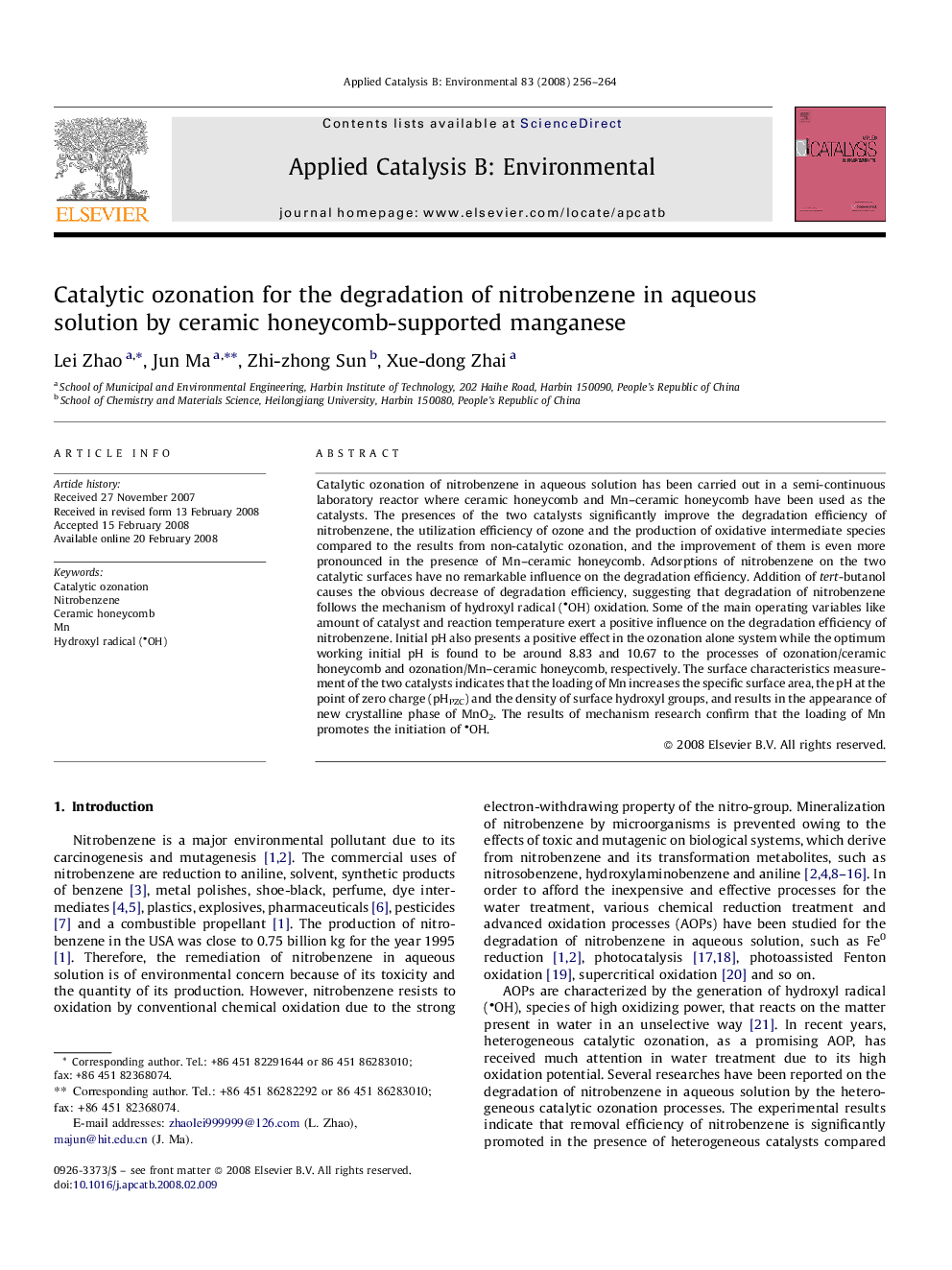| Article ID | Journal | Published Year | Pages | File Type |
|---|---|---|---|---|
| 48158 | Applied Catalysis B: Environmental | 2008 | 9 Pages |
Catalytic ozonation of nitrobenzene in aqueous solution has been carried out in a semi-continuous laboratory reactor where ceramic honeycomb and Mn–ceramic honeycomb have been used as the catalysts. The presences of the two catalysts significantly improve the degradation efficiency of nitrobenzene, the utilization efficiency of ozone and the production of oxidative intermediate species compared to the results from non-catalytic ozonation, and the improvement of them is even more pronounced in the presence of Mn–ceramic honeycomb. Adsorptions of nitrobenzene on the two catalytic surfaces have no remarkable influence on the degradation efficiency. Addition of tert-butanol causes the obvious decrease of degradation efficiency, suggesting that degradation of nitrobenzene follows the mechanism of hydroxyl radical (OH) oxidation. Some of the main operating variables like amount of catalyst and reaction temperature exert a positive influence on the degradation efficiency of nitrobenzene. Initial pH also presents a positive effect in the ozonation alone system while the optimum working initial pH is found to be around 8.83 and 10.67 to the processes of ozonation/ceramic honeycomb and ozonation/Mn–ceramic honeycomb, respectively. The surface characteristics measurement of the two catalysts indicates that the loading of Mn increases the specific surface area, the pH at the point of zero charge (pHPZC) and the density of surface hydroxyl groups, and results in the appearance of new crystalline phase of MnO2. The results of mechanism research confirm that the loading of Mn promotes the initiation of OH.
